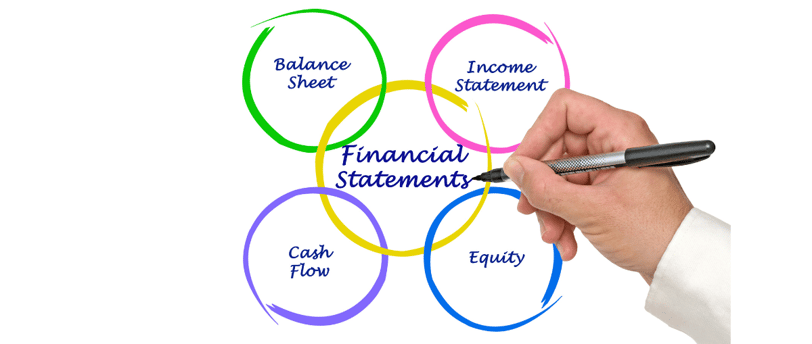Mastering Your Clinic's Financial Health Through Financial Reports
Understanding Your Clinic's Financial Statements: A Guide to Balance Sheets, Profit & Loss Statements, and Cash Flow Statements Financial literacy is essential for successfully running a mental health clinic. This guide demystifies three cornerstone financial statements—Balance Sheets, Profit & Loss (Income) Statements, and Cash Flow Statements—providing clinic owners with key insights into the business's financial health. Learn what constitutes the Cost of Goods Sold in a healthcare setting, how to assess your clinic's liquidity, and why effective cash management is crucial for long-term success. Equip yourself with the knowledge you need to make informed decisions that foster sustainable growth.
Dr. Frances Robbins
9/5/20236 min read


Running a clinic is a multifaceted job that requires keen attention to various aspects, from patient care to financial management. I can't stress enough how crucial financial reports are for a clinic's well-being. In this guide, I'll walk you through the essential financial reports and then take an in-depth look at the key financial ratios you should know, including how to calculate and interpret them for your benefit.
The Cornerstones of Financial Reporting
Balance Sheet: A balance sheet is a financial statement that provides a snapshot of a business's financial condition at a specific point in time. It outlines the assets, liabilities, and Equity of the company. The balance sheet follows the fundamental accounting equation: Assets = Liabilities + Equity. This equation demonstrates the relationship between what a business owns (assets), what it owes (liabilities), and the residual interest of the owners (Equity).
Assets- Assets represent what a company owns and can be either current or non-current. Current assets include cash, accounts receivable, and inventory, among other things. A business expects to convert these assets into cash or use them up within a year. Non-current assets include property, plant, equipment, and long-term investments. These are assets that will not be converted into cash within a year.
Liabilities- A company owes liabilities and is classified as current or non-current. Current liabilities are obligations that the business needs to settle within a year, such as accounts payable and short-term loans. Non-current liabilities include long-term loans and deferred tax liabilities, which the company doesn't expect to pay off within a year.
Equity- Also known as shareholders' equity or owners' equity, equity represents the owners' residual interest in the company. This includes initial investments, retained earnings, and other forms of capital belonging to the company's owners.
Importance of a Balance Sheet
1. Solvency Assessment: A balance sheet allows stakeholders to evaluate a company's ability to meet its long-term obligations
2. Liquidity Analysis: The ratio of current assets to current liabilities gives insights into a company's ability to cover short-term debts.
3. Investment Decisions: Investors often scrutinize balance sheets and other financial statements to determine the financial health of a business before making investment decisions.
4. Benchmarking: Businesses can compare their balance sheets with those of competitors or industry averages to assess their relative performance.
5. Compliance and Reporting: Balance sheets are often required by law and are essential for tax preparation and other regulatory submissions.
Understanding a balance sheet is crucial for business owners, investors, and stakeholders to gauge a company's financial health and performance. Regularly reviewing and analyzing balance sheets can make more informed decisions related to business strategy, investment, and risk management.
A Profit and Loss Statement (P&L) and an Income Statement are essentially the same financial document but may be referred to differently depending on the context or the user's preference. Both summarize a company's revenues, expenses, and profits or losses over a specific period, usually a quarter or a year.
Components of the Profit and Loss (Income) Statement
Revenue: This is the Income generated from the company's operations, often classified as operating and other revenue.
Cost of Goods Sold (COGS): This includes the direct costs of producing or purchasing a company's goods or services
Gross Profit: Calculated as Revenue - COGS, it represents the profit made before operational expenses, taxes, and interest payments.
Operating Expenses: These are the costs incurred during regular business operations, such as salaries, rent, utilities, and marketing expenses.
Operating Income: This is Gross Profit - Operating Expenses. It reflects the profit generated from core business operations.
Other Income and Expenses: These include all the non-operational Income and expenses like investment income or costs related to debt repayment.
Pre-Tax Income: This is Operating Income plus Other Income and Expenses.
Taxes: This is the income tax owed based on the pre-tax Income.
Net Income: The final line on the statement, calculated as Pre-Tax Income - Taxes, represents the company's profit or loss during the period.
Importance of Profit and Loss (Income) Statement
Performance Evaluation: It shows how well a company is performing by revealing the bottom-line profit or loss.
Cost Management: Itemizing costs helps businesses identify areas where they can reduce expenses.
Revenue Analysis: It enables businesses to analyze revenue streams and adjust their sales and marketing strategies.
Investor Relations: Investors closely examine this statement to assess a company's profitability and future growth prospects.
Tax Filing: It is an essential document for accurate tax filing and is usually required by regulatory agencies.
Loan Applications: Financial institutions may require a P&L statement to assess a business's ability to repay loans.
Budget Planning: The statement is crucial for future budgeting and financial planning.
Although they essentially serve the same purpose, the terms "Profit and Loss Statement" and "Income Statement" are sometimes used in different contexts. Small businesses and sole proprietors often prefer using the "Profit and Loss Statement," while larger corporations and external stakeholders like investors and analysts commonly use the "Income Statement."
Understanding the Profit and Loss or Income Statement is vital for assessing a business's financial health and operational efficiency. Businesses regularly review this statement to make informed decisions about their strategic goals and long-term sustainability.
Cash Flow Statement: A cash flow statement is a financial document that outlines how changes in the balance sheet and income statements affect cash and cash equivalents. It categorizes cash inflows and outflows into three main sections: operating activities, investing activities, and financing activities. The cash flow statement bridges the income and balance sheets, offering a comprehensive view of a company's cash management over a specific period, usually a quarter or a year.
Components of a Cash Flow Statement
Operating Activities: This section reflects the cash generated or used in the core business operations. It starts with the net income and adjusts for non-cash items like depreciation, accounts receivable, and accounts payable to derive the net cash provided by operating activities.
Investing Activities: This section includes cash flows related to the acquisition and disposal of long-term assets, such as property, equipment, or investments in other businesses. Purchasing a building or selling a piece of machinery would appear here.
Financing Activities: This area shows the cash flows between the company and its owners or creditors. Issuing or repurchasing stock, borrowing money, or paying down debt would fall under this category.
Importance of a Cash Flow Statement
Liquidity Analysis: The statement helps stakeholders assess a company's ability to meet short-term obligations, offering insights into its liquidity.
Operational Efficiency: By evaluating the cash flow from operating activities, one can gauge the efficiency with which the company generates cash from its core business.
Investment Assessment: Investors examine cash flows from investing activities to understand how a company allocates its capital for future growth.
Financing Decisions: The cash flows from financing activities show how a company is raising capital and returning value to shareholders, be it through dividends, debt repayment, or stock repurchases.
Cash Management: Effective cash management is vital for any business, and the cash flow statement is a diagnostic tool for identifying areas requiring attention.
Strategic Planning: By understanding cash flows, businesses can make informed decisions about business expansion, debt repayment, and other strategic activities.
7. Compliance: For public companies, producing a cash flow statement is often a regulatory requirement for financial reporting and audits.
A cash flow statement provides a detailed account of a company's cash inflows and outflows over a particular period. It is a vital tool for assessing the company's financial health and making informed business decisions. By examining a cash flow statement with the balance sheet and income statement, business owners can comprehensively understand their business's financial condition.
The Art of Interpretation: Financial Ratios
While trend spotting and industry comparisons are important, financial ratios give you a granular look into your clinic's financial stability. Let's delve into this crucial subject.
Debt-to-Equity Ratio: Measuring Financial Leverage
What It Means: The debt-to-equity ratio reveals how much of your clinic's growth is financed by debt versus internal funds (Equity).
How to Calculate: Divide your total liabilities by your shareholders' Equity. Both numbers are found on your balance sheet.
Debt-to-Equity Ratio = Total Liabilities / Shareholders' Equity
How to Interpret: A high ratio could signal you're relying heavily on debt to fuel growth, which may be risky. On the other hand, a low ratio suggests that you are less dependent on external funds.
Action Steps:
- If the ratio is high, you may need to pay down debt or reconsider your financing strategies.
- Consult industry benchmarks to see where your clinic stands in comparison.
Solvency: Are You Built for the Long Run?
What It Means: Solvency reflects your clinic's ability to meet long-term obligations. A solvent business has a solid asset base compared to its liabilities.
How to Calculate: The solvency ratio is calculated as:
Solvency Ratio = Total Assets / Total Liabilities
How to Interpret: A ratio greater than 1 indicates solvency and financial health.
Action Steps:
- Regularly review your long-term assets and liabilities.
- Consider future investments carefully to maintain a healthy ratio.
Insolvency: A Red Flag
What It Means: Insolvency implies that your clinic can't meet its financial obligations in the short term or long term.
How to Recognize: When your liabilities exceed your assets and your cash flow is negative, insolvency is looming.
Action Steps:
- Conduct an immediate financial review.
- Seek professional advice for remedial measures like debt restructuring.
Understanding these financial ratios doesn't just offer you a snapshot of your current financial standing; it gives you actionable insights to proactively manage your clinic's finances. As you get comfortable with these ratios, you'll find they are invaluable in your financial toolkit, aiding in strategic decision-making and long-term planning.
Frances Robbins, DBA, MIH, MSN, APRN-PMHNP-BC
USAF Veteran | Over 20 Years in Mental Health Expertise | Turning Vision into Exceptional Practices


